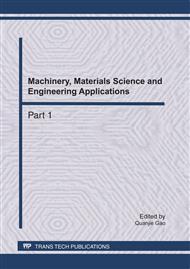p.1
p.5
p.10
p.17
p.23
p.29
p.34
p.38
p.44
Low Temperature Anti-Cracking Performance of Brucite-Fiber-Reinforced Asphalt Concrete
Abstract:
As a naturally occurring fibrous mineral abundant in China, it is not common to use the brucite fiber as the reinforcement in asphalt concrete to improve its anti-cracking property in low temperature until now. Laboratory experiments are made on the brucite fiber asphalt binder and the brucite fiber asphalt concrete in this paper. Effects of the dosage of the brucite fiber on anti-crack properties of asphalt binder and brucite fiber asphalt concrete in low temperature are also studied. The contrast test is made between brucite fiber, lignin fiber and basalt fiber. Test results show that the value of the ductility, the compliance in extension and the yield strain energy of asphalt binder decreases with the increasement of the dosage of brucite fiber. However, the temperature sensitivity property of asphalt binder in low temperature can be improved. The anti-crack properties especially the maximum bending stress and the maximum bending strain are improved by adding the proper quantity of brucite fiber in asphalt concrete. According to the test results, the optimum quantity of brucite fiber was about 0.4 wt.% of asphalt. Based on the contrast test, the brucite fiber is better than the lignin fiber on improving the anti-crack properties of the asphalt concrete, but which is similar to the basalt fiber.
Info:
Periodical:
Pages:
23-28
Citation:
Online since:
April 2011
Authors:
Price:
Сopyright:
© 2011 Trans Tech Publications Ltd. All Rights Reserved
Share:
Citation:


